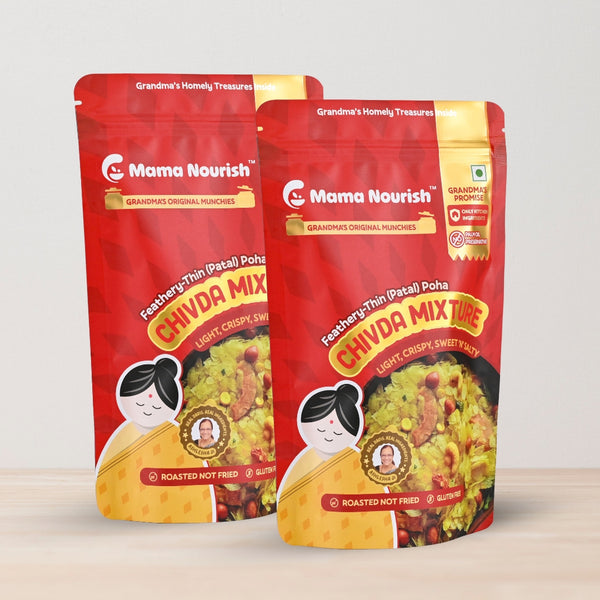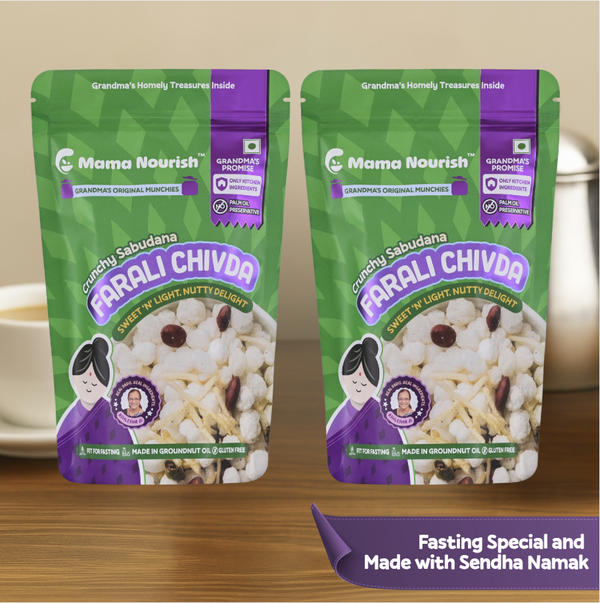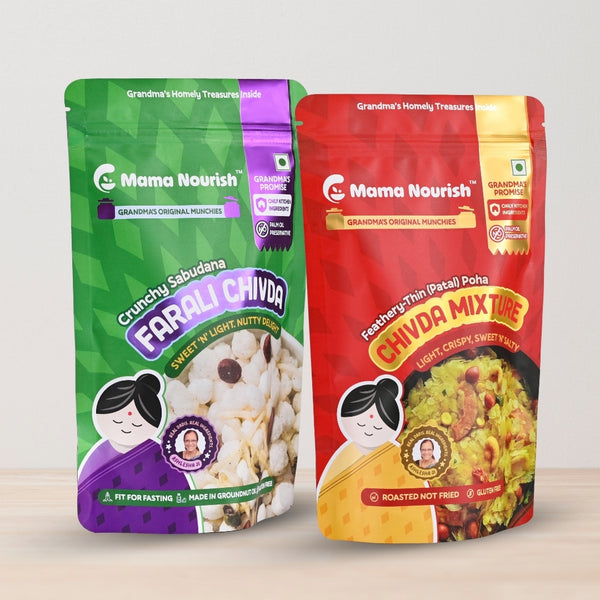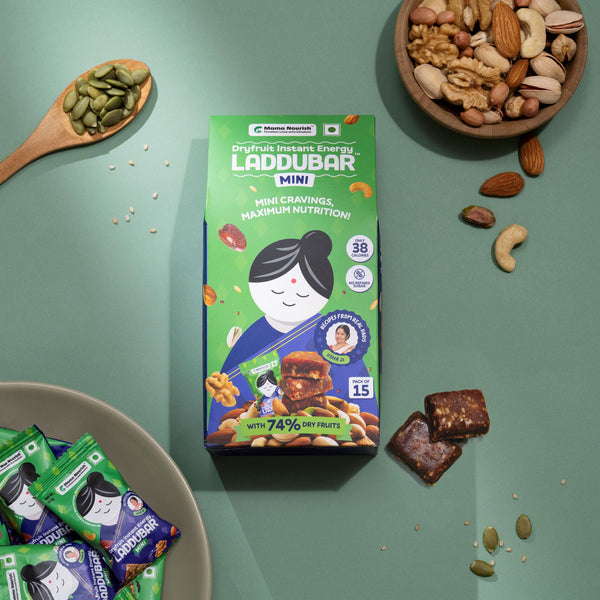Home
>
Nourishing Trails
Rediscover India’s nutritional treasures: History of Laddus | Laddoo |Ladoo
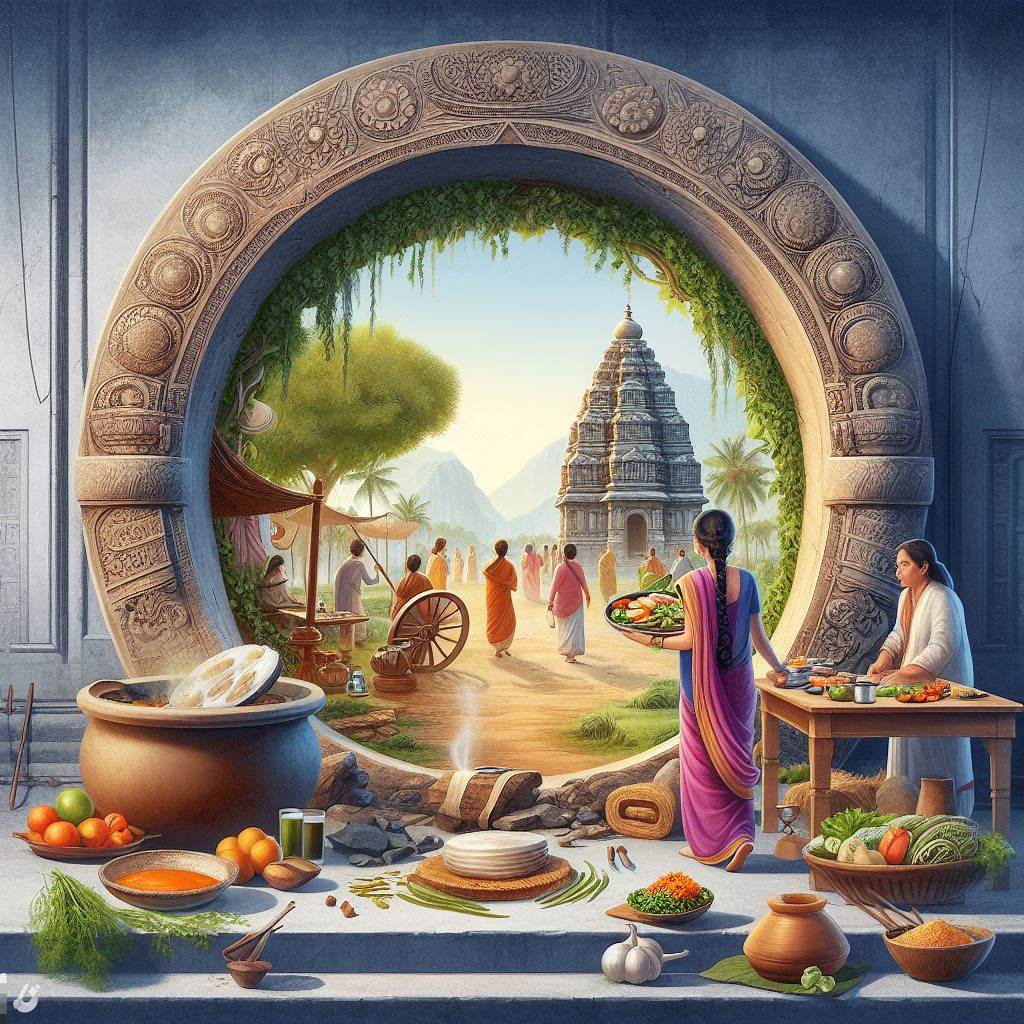
Rediscover India’s nutritional treasures: History of Laddus | Laddoo |Ladoo
Rediscover India’s nutritional treasures: History of Laddus | Laddoo |Ladoo

India's thousand-year-old culinary heritage is extraordinarily rich, and diverse. It is amazing how our fore fathers had woven extensive knowledge of human body, nature and its interrelationship to evolve wisdom foods which nourish and heal. What's even more awe-inspiring is the means by which this wealth of knowledge has transcended over generations, becoming an integral part of our culture and shaping the way we eat today.
However, modern, fast-paced lifestyles have led to the gradual disappearance of these nourishing, thoughtful foods from our lives. Primarily due to the hassle associated with making them and the time constraints faced by dual-working partners especially in urban cities.
Thro ugh this series of blogs under 'Rediscover India’s Nutritional Treasures,' our attempt is to take you on a journey through deep, insightful, articles one category at a time, making you time travel to the origin and evolutionary journey of thoughtful Indian heritage foods, understand their benefits, and appreciate the variations and traditions associated with each of these recipes across various sub-treks on trails across regions of India.
ugh this series of blogs under 'Rediscover India’s Nutritional Treasures,' our attempt is to take you on a journey through deep, insightful, articles one category at a time, making you time travel to the origin and evolutionary journey of thoughtful Indian heritage foods, understand their benefits, and appreciate the variations and traditions associated with each of these recipes across various sub-treks on trails across regions of India.
 ugh this series of blogs under 'Rediscover India’s Nutritional Treasures,' our attempt is to take you on a journey through deep, insightful, articles one category at a time, making you time travel to the origin and evolutionary journey of thoughtful Indian heritage foods, understand their benefits, and appreciate the variations and traditions associated with each of these recipes across various sub-treks on trails across regions of India.
ugh this series of blogs under 'Rediscover India’s Nutritional Treasures,' our attempt is to take you on a journey through deep, insightful, articles one category at a time, making you time travel to the origin and evolutionary journey of thoughtful Indian heritage foods, understand their benefits, and appreciate the variations and traditions associated with each of these recipes across various sub-treks on trails across regions of India.Today we are embarking on a voyage of “Laddus”, a culinary nutritious gem, which is as old as human civilization and awaits rediscovery.
Before we embark on this journey, let's appreciate the humble laddu – round, bite-sized nutritional treats that hold a special place in every Indian’s heart and households. Their universal appeal transcends age, region, and occasion.
Do you ever wonder about their origin – when and where they invented?
Delving into centuries-old story: Heritage of Laddus
Ancient texts and beliefs tell us that, about 5000 years ago, it was Maharishi Sushruta, the father of Surgery, and author of foundational ayurvedic texts, who invented the first “Laddu” of the world, as a medicinal supplement, blending jaggery, sesame seeds, with honey, and herbs. He ingeniously employed them as antiseptic aids in his practices, realizing their potential. The concoction he used for medicinal purposes is well known today as Til-laddu or Seasame seed balls.

Our culinary journey through laddus takes us to the 11th-century AD Western Indian cookbook known as Lokopakara. Within its pages rest the first documented mention of laddu as a nutritious delight.
Interesting Fact: The term "laddu" originates from the Sanskrit word "ladduka," meaning a small ball. It has been referred as “Laddu, Unde, Unda, Undrallu and even modak across regions and variations.
Credible evidence Laddu=Nutrition
Recent research by the Archaeological Survey of India reveals that the ancient Harappan civilization, about 4,000 years ago, consumed high-protein multigrain 'laddus.' These food balls, discovered in Rajasthan, served both as sustenance and in rituals and offerings, shedding light on the Harappan people's dietary practices. (Link)
Although laddus were invented for medicinal and nutrition purposes, they solely with global and cultural influences over the history of Bharat evolved in to delicious dessert that was loved by everyone. India is a diverse country with different climates, cuisines, and nutritional needs. Thus, hundreds of varieties of nutritious laddus emerged to suit the local availability of ingredients and the preferences of the people.
Mothers and grandmothers of India have been passing these nutritious delicacies generation after generation, nurturing civilization. No food on earth can perhaps claim to be as trusted and nutritious as grandmother’s nutritious laddus. This journey through time not only reveals the rich heritage of laddus but also underscores their enduring presence in India's cultural and culinary narrative as a rich, nutritional, and healthy delight.
Nutrition and Health Benefits:
Along with their irresistible taste, laddus offer a plethora of nutritional benefits. Their balanced combination of carbohydrates, proteins, and healthy fats makes them the perfect snack. Nuts like almonds and cashews commonly found in laddus provide essential vitamins and minerals.
Laddus true to their original purpose of nourishing and healing, evolved into various forms for specific functions. For example: “Gondh dryfruit Laddu”, also known as “Dinkache Laddu” or Panjiri for centuries have been the go-to supplement for new mothers for their post-partum recovery aiding lactation.
The use of Dates, jaggery or honey as sweeteners adds natural sweetness. Unfortunately, due to commercialization and industrialization modern laddus, often contain excessive refined sugar. But you can surely trust and choose the original Laddus. Savouring the traditional, nutritious original form of laddus can be the perfect guilt-free indulgence, and their energy-boosting qualities make them an excellent choice for a quick pick-me-up.
Laddus Across India - A Regional exhibition
One of the most fascinating aspects of laddus is their regional significance with rich nutritional benefits.
|
“Gond Dryfruit Laddu” |
Region: North & Western India: Rajasthan, Maharashtra and MP Ingredients: Gondh, whole wheat, ghee, jaggery/dates, and dry fruits, Dry ginger powder, Poppy seeds etc. Nutritional Benefits: Gond laddu is a unique nutrient dense specialty known for its nourishing properties. It's often recommended for lactating mothers as it helps in post-pregnancy recovery. Gond provides energy, while whole wheat and dry fruits offer essential nutrients. |
|
“Methi Laddu” |
Region: Saurashtra : Maharashtra and Gujarat Ingredients: Fenugreek seeds (methi), wheat flour, jaggery, ghee, and nuts. Nutritional Benefits: Methi laddu is packed with the goodness of fenugreek seeds, which are known for their potential to manage diabetes, control cholesterol levels, and aid digestion. They have also been new mother’s go to supplements, especially those facing gestational diabetes. The nuts provide protein, healthy fats, and vitamins. |
|
Kamarkas Laddu |
Region: Sindh region: Today’s Punjab and Haryana Ingredients: Kamarkas resin from Palash tree, wheat flour, jaggery, ghee, and spices. Nutritional Benefits: Kamarkas laddu is known for anti-ageing benefits, its antioxidants combats free radicals, thereby easing the wrinkles, fine lines and other aging signs on skin. It also helps in strengthening muscles, ligaments, and bones. Providing energy and improves overall health. |
|
Til Laddu |
Region: Prepared and enjoyed across India, also associated with traditional rituals and festivals like Makar Sankranti. Ingredients: Sesame seeds (til), jaggery or sugar, ghee, and sometimes, dry fruits. Nutritional Benefits: Til laddu is extremely dense source of Protein, healthy fats, fibre, calcium, iron, magnesium and copper. It's also known providing valuable antioxidants. |
|
Coconut Laddu |
Region: Coastal regions of India: Orissa, West Bengal, Kerala, Tamil Nadu, Andhra Pradesh, Telangana, Karnataka, and North-eastern states. Ingredients: Grated coconut, saffron, cardamom, and nuts. Nutritional Benefits: Coconut laddu is a delicious treat rich in dietary fibre, minerals, and vitamins. |
|
Unnisunudalu |
Region: Southern India: Andhra Pradesh and Telangana Ingredients: Moong lentils (green gram), jaggery, ghee, and cardamom. Nutritional Benefits: Unnisunudalu, also known as Sunniundalu, are protein-packed laddus that offer easiest to digest vegan protein dose along with minerals and antioxidants. They have multiple health benefits like muscle repair, weight management, maintaining haemoglobin, etc. |
The undesirable transformation of Laddus: Nourishment to Indulgence
Over its 5,000-year history, Laddus underwent a significant transformation in the last 150 years. Originally conceived as natural and nutritious supplements, they evolved into addictive indulgent sweets, primarily due to various factors:
- Medieval Invasion and Changing Tastes: During the medieval invasion era, the significance of taste and indulgence in food began to overshadow nutritional value. Influences from foreign cultures introduced new flavors and culinary practices, leading to the gradual shift from nourishing Laddus to sweeter, more indulgent versions.
- Forced Introduction of White Sugar: The colonial masters introduced white sugar to India, which drastically changed the sweetness profile of Laddus. The use of refined sugar became prevalent, making these treats more tempting but less nutritious.
- Advent of Commercialization: With the advent of commercialization and mass production, the focus shifted from using wholesome, locally sourced ingredients to cost-effective alternatives. This shift compromised the original nutritional content of Laddus.
-
 Modern Lifestyle and Convenience: The fast-paced modern lifestyle contributed to the transformation of Laddus into convenient, pre-packaged sweets, emphasizing longer shelf life and enhanced taste, often at the expense of nutrition:
Modern Lifestyle and Convenience: The fast-paced modern lifestyle contributed to the transformation of Laddus into convenient, pre-packaged sweets, emphasizing longer shelf life and enhanced taste, often at the expense of nutrition:
Over time, a confluence of factors, including evolving cultural preferences and dynamic culinary practices, gradually transformed them from their origins as a supplement into sweet delights.
But, despite these transformations, laddus remain custodians of their core values. They embody love, care, and tradition, acting as a cherished link to their humble origins as essential nutritional supplements.
The Resurgence of Health-Conscious and mindful eating: Increasing appreciation of Indian culinary wisdom
In recent times, there has been a remarkable resurgence of health-conscious and mindful eating practices, with a particular surge following the COVID-19 pandemic. The pandemic has underscored the critical importance of a strong immune system, leading people worldwide to prioritize immune-boosting foods and adopt a more natural approach to their diets. This renewed focus beautifully aligns with the principles of Yoga and Ayurveda, ancient Indian traditions that emphasize holistic well-being and a balanced lifestyle, including dietary choices. Additionally, the revival of millets, revered ancient grains known for their nutritional richness and sustainability, has garnered significant attention among health-conscious individuals. This resurgence not only highlights the significance of mindful eating but also reaffirms the enduring relevance of India's time-honored culinary wisdom in the modern world.
In recent years, as people have become increasingly health-conscious, a remarkable renaissance has taken place in the world of laddus. Driven by a growing interest in healthier snacking options, these sweet treasures have undergone a thoughtful evolution. Innovative laddu variations have emerged, skilfully incorporating ingredients like oats, flax seeds, and dry fruits to align with contemporary nutritional preferences while honouring their traditional roots.
Interesting Fact: In 1984, during the STS-41-B space shuttle mission, Indian-American astronaut Raja Chari carried a small container of laddus into space. It became the first Indian sweet to travel beyond Earth's atmosphere!
Importance of Preserving Healthy, nutritious Laddu, filled with “Timeless love and Wisdom”
In our fast-paced world, the culinary gems that have been part of our heritage for centuries often get overlooked. Laddus, those delightful, nutritious balls, were created with an abundance of thoughtfulness. They're not just sweet treats; they are a manifestation of our rich Indian culinary heritage, where nutrition, natural ingredients, and motherly love seamlessly integrate.
As we embrace convenience foods, we sometimes forget the wisdom embedded in our traditions. Laddus, with their blend of natural ingredients, offer a pathway to a healthier lifestyle. It's time to rediscover the nutritional treasures they hold and savour the goodness they bring.
But let's not forget the unsung heroes behind this tradition—our mothers and grand mothers. They have lovingly preserved the art and knowledge of making laddus, nourishing civilizations, ensuring that we grow up healthy and happy. So, the next time you enjoy a laddu, remember that you're not just relishing a treat; you're celebrating a piece of our culinary heritage. Let's keep the tradition alive, not just for ourselves but for the generations that follow. Celebrate the laddu, for it represents our past, our present, and our path to a healthier and more nourishing future.
Share this article with your dear ones, be proud of the ingenious creation of laddus, and write in the comments below your preferred nutritious laddu twists!
Share
Good Products

